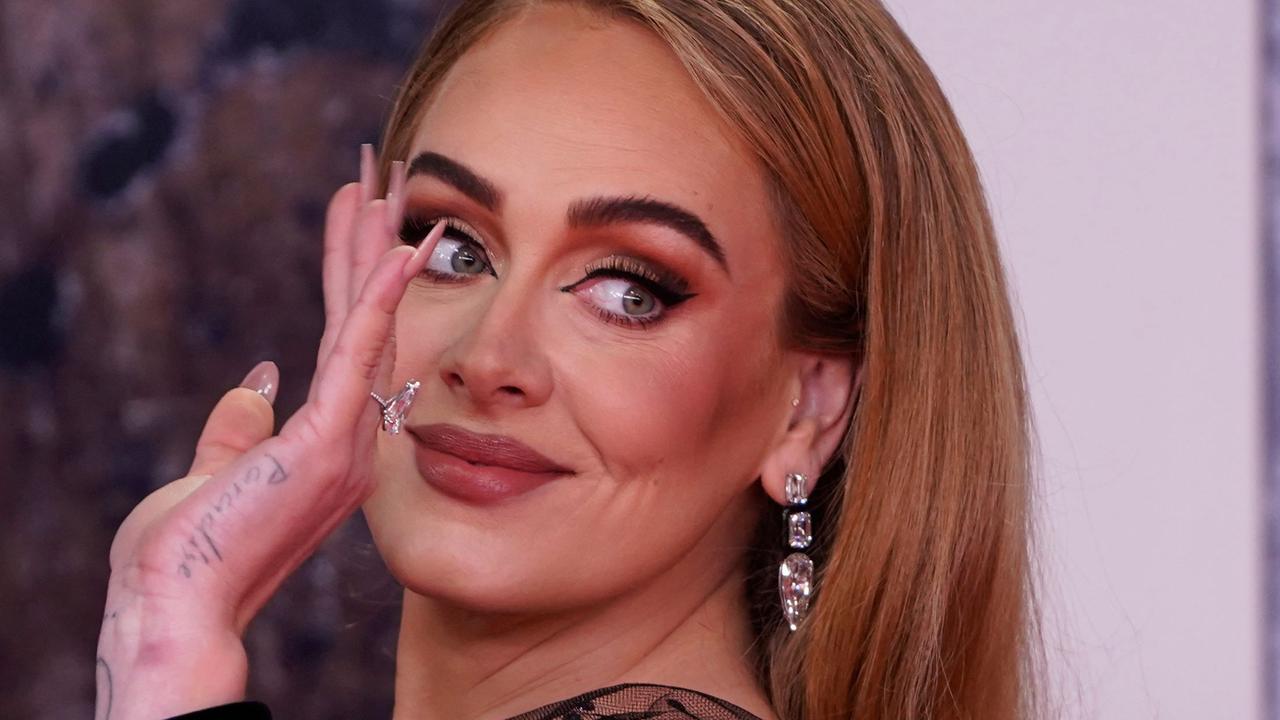Division, debate, confusion: Kyam Maher on his greatest test – and why mum Viv is his biggest source of inspiration
The newly appointed Attorney-General has already made history in SA. But now he faces a monumental task among Aboriginal communities. Can he pull it off?
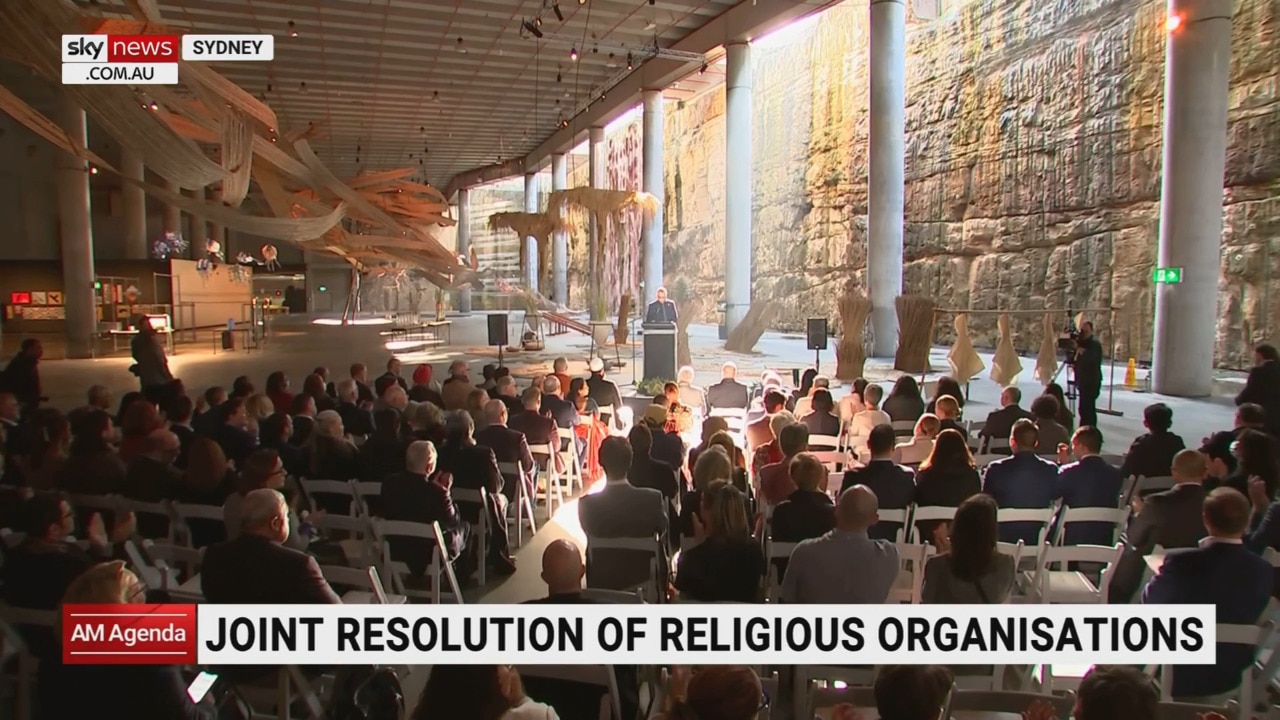
SA Weekend
Don't miss out on the headlines from SA Weekend. Followed categories will be added to My News.
Kyam Maher, South Australia’s newly appointed Attorney General and Aboriginal Affairs Minister, has a big challenge ahead of him: forging SA’s first Treaty with Aboriginal communities.
In an in-depth interview with SA Weekend, Maher opens up about how he’s prepared to take on the task, and how his “hero” mum is his biggest source of inspiration.
Kyam Maher stands in his new office admiring the surroundings from the 19th floor of the GPO Exchange building.
The newly appointed Attorney-General maintains a cautious distance from the floor-to-ceiling windows.
“I don’t deal with heights very well,” he says, laughing. “That’s why the blinds are down – so I don’t freak myself out when I turn on a light.”
The afternoon sun is making its way across Victoria Square and the Sir Samuel Way Building that houses South Australia’s Supreme Court basks in the golden hour light.
But just above it is what catches Maher’s eye.
The red, yellow and black of the Aboriginal flag visible on the side of an unassuming cream brick King William St building.
“You can see the Aboriginal Legal Rights Movement with the Aboriginal flag painted on the side,” he says proudly pointing across the square.
“It’s a pretty cool view seeing the Aboriginal flag … from the Attorney-General’s office. I like it.”
Below and to the left the flag itself flies high above Victoria Square, where it was flown for the first time more than 50 years ago, in 1971.
Maher beams at the symbols of his culture that he will be able to admire from his office for at least the next four years.
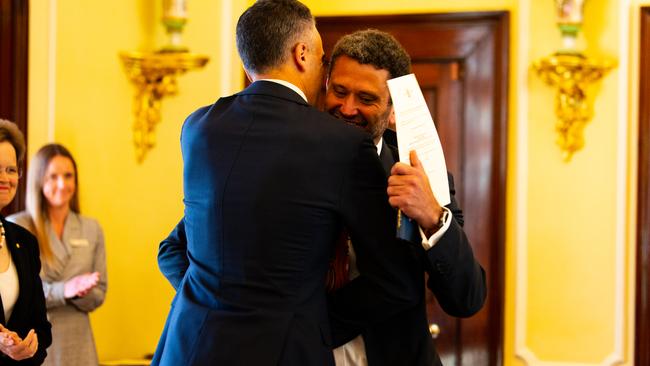
In 186 years of South Australia’s existence, anAboriginal person has never occupied the state’s highest legal office.
Until now.
The responsibility that comes with the historic appointment is not lost on him.
“There is a great deal of expectation,” Maher, 48, says from the couch in his office. He clamps a bulldog clip open and shut as he talks.
He looks restless, like someone who has had so much to do for so long that just sitting and talking is no longer the norm.
He’s been in government before and, while this role is new to him, especially when combined with his portfolios of Aboriginal affairs and industrial relations, the power structures are familiar.
But that’s not what’s weighing on him.
At the forefront of his mind is overcoming one of the toughest challenges of his career, and delivering on a key pillar of the unstoppable freight train that was the Peter Malinauskas election campaign.
It is one word: Treaty.
The trained lawyer’s fire was lit when he joined the Mike Rann Labor government fresh after the 2002 election and became then-Aboriginal affairs Minister Terry Roberts’ chief of staff. It was a trip to the Anangu Pitjantjatjara Yankunytjatjara (APY) Lands during a petrol sniffing crisis that left a permanent mark.
He found his calling.
“I can remember thinking ‘I’ve got to do everything I can to change it’ and that’s when I think I said ‘all right I want to be in parliament; I want to drive change like that, too’,” he says.
He was particularly troubled by a spate of suicides among young Aboriginal men in the APY Lands over the space of just a few months in the early 2000s. “I remember thinking, ‘we’ve got to do better; there’s got to be a better way’.”
The 2018 election loss left a bitter taste in the mouths of all Labor MPs but Maher took it particularly hard.
He had unfinished business on Treaty.
In 2016, the Labor government, with Maher at the forefront, began Treaty talks with Aboriginal nations to work towards acknowledging and correcting what were described as past injustices.
It was the earliest notion of Treaty talks in Australia and predated even the 2017 Uluru Statement, which was the largest coming together of indigenous people calling for recognition in Australia’s history. Three pillars formed the statement which sought to bring the constitutional recognition of indigenous people to the national agenda: Voice, Treaty and Truth.
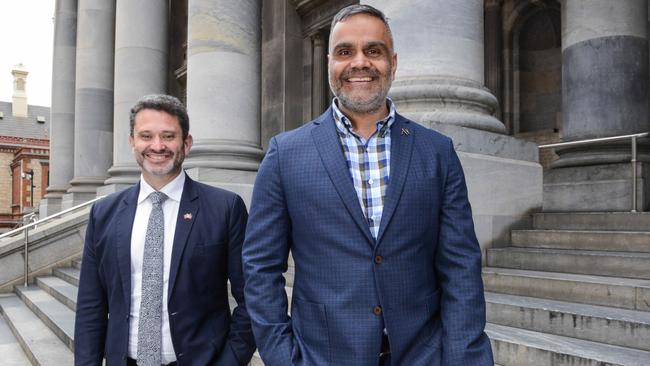
In February 2018, the state Labor government took the first step towards implementing one of those pillars when the Buthera Agreement was signed with the Narungga Nation Aboriginal Corporation of the Yorke Peninsula.
The agreement was committed to “drive development, economic enterprise and collaborative engagement with government agencies” on the peninsula.
It included projects in youth justice, housing, domestic violence, health, child protection, education and cultural studies.
Then they lost the election.
On the surface, the idea of Treaty is relatively straightforward, equalling self determination and recognition for indigenous people and communities, and has been Maher’s driving force since the statement was handed down in 2017.
In short it would allow indigenous communities and people a certain level of self-governance.
It is the execution which is deeply complex.
One working example is the historic Treaty of Waitangi, which was signed in New Zealand in 1840. It was the founding document of the country and an agreement between Maori tribes and the British which outlines how the two groups coexist and the recognition given to their First Nations people.
The difficulty is, though, that as it stands, Treaty in much of Australia is little more than a well-intentioned concept.
A month after the 2018 election, where the Liberal Party ended the 16-year-long Labor stronghold of the state, new premier Steven Marshall announced he would pause Treaty talks and focus on practical outcomes for Aboriginal people.
At the time he said he would not make a final decision on whether or not he would abandon treaty Talks altogether. He said he would wait until he had received a report from then-Treaty Commissioner Roger Thomas.
But Thomas, who is now the state’s Commissioner for Aboriginal Engagement, says his impression was Marshall’s mind was made up well before that announcement.
“It was off the table,” Thomas says.
He is reluctant to talk at length about Treaty and Voice because he is no longer the go-to person on the matter but says that he had no discussion with Marshall about the possibility of Treaty talks continuing.
In June 2018, Marshall subsequently announced he would not pursue Treaty talks but rather develop a statewide agreement that would focus on Aboriginal education, child protection, health and employment.
Speaking at a Norwood cafe almost three months after this year’s state election loss, Marshall stands by this decision.
He says simply it was the right and just outcome for Indigneous communities.
He has stepped aside as leader of the Liberal Party in South Australia but is as fiercely defensive of his policies as the man who became the most recognisable face in the state in the past two years; the few months away from the limelight have not softened him.
He says the former government achieved more for Aboriginal people by prioritising areas of health and education rather than Treaty talks. Their approach was tangible action over tokenism and symbolism, he says. (In July 2017 as leader of the opposition, he labelled Treaty a “cruel hoax”).

Marshall became the first premier to hold the Aboriginal Affairs portfolio and points out that he too has striven for recognition of Aboriginal people. Last May, Marshall himself announced plans for an indigenous Voice to parliament and called for federal action on a referendum.
At the time he said the push for Voice was part of the “long and important tradition of Liberals encouraging public debate about reconciliation. I hope this can be put in place following extensive consultation with our Aboriginal leaders and their communities”.
He is also critical of the Buthera Agreement, which he says was “rushed through prior to the 2018 election” and “led to very significant issues within the Narungga nation”.
“It was, in many ways, a vanity piece for Kyam Maher in the lead up to that 2018 election,” Marshall says.
Maher maintains an anger over the cessation of Treaty talks.
“Make no mistake,” he says.
“I have a lot of resentment directed towards a government that would stop that.”
In a 2017 report detailing the next potential steps in treaty talks, on the back of what is believed to be one of the biggest consultations of Aboriginal people in the state, Thomas wrote that there was a “very strong appetite, passion and high-level of engagement from Aboriginal people across the state to discuss what a treaty may mean to them”.
Overwhelmingly, the prospect of Treaty received a positive response, with the belief it would allow Aboriginal people to be “economically self-determining” as well as establish greater recognition of their land and seas. He recommended the government continue to explore Treaty.
“There was a lot of anger at the time,” Maher recalls of the fallout from Marshall’s decision to park the matter.
“I certainly took a lot of calls at the time … from some really senior Aboriginal people … that were very, very upset that you created this optimism, this expectation, that Aboriginal people would be listened to, that they would get to be part of the decision making process for programs and services that affect their lives.
“And now that’s not going to happen.”
Thomas has also defended the Buthera Agreement. In a 2020 report he said it gave a “strong indication of what can be achieved through formal negotiations and agreement between the state government and South Australia’s Aboriginal nations”. He added that the “model of agreement can be beneficially adopted by other Aboriginal nations”.
The opposing political camps capture the essence of what is a complex, emotionally charged and enormously divisive issue.
No doubt there has been good intentions on both sides, but there is little question the road to this point has been long and difficult … and that’s likely just a precursor to what lies ahead.
Marshall says he is yet to see any clear plan from Maher about what the Treaty will look like for Aboriginal people and, beyond that, what tangible and genuine outcomes it will produce to improve their lives.
Marshall is also critical of state Labor’s decision to pursue Treaty talks before establishing the promised indigenous Voice to parliament.
He calls the election pledges from Maher this time around “lazy headline grabbing”.
“Treaty can only really follow a process where you’ve got Voice,” Marshall says.
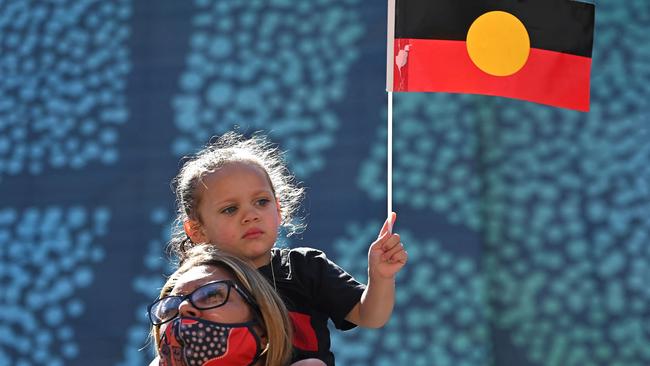
When the two came face-to-face at a budget estimates committee hearing in late June, thelayers of difficulty were writ large. As was the lack of detail. Asked by Marshall if he planned to negotiate agreements with all Aboriginal nations in South Australia, Maher was noncommittal. With more than 30 recognised Aboriginal nations in South Australia, negotiating agreements similar to Buthera, to which the former Labor government committed $4.4m over five years, is a monumental task.
As Thomas’s report says, though, the Buthera model would likely benefit each and every one of them.
However, Maher says a lot has changed since the Buthera Agreement, and picking up exactly where Labor left off in 2018 wouldn’t be a “sensible starting point”.
“There could be many agreements,” he told the committee.
To further muddy the waters, Maher said the Voice element of the Uluru Statement was now the priority, ahead of Treaty and Truth – a comment that no doubt piqued the ears of the former premier.
This followed Prime Minister Anthony Albanese announcing his plans for a first-term referendum to enshrine a First Nations’ Voice in the Constitution, ensuring indigenous Australians are represented in parliament on the issues that directly affect them.
“Most of those who were involved in the dialogues leading up to the Uluru Statement, and since, have thought that the most logical and beneficial way … is Voice first,” Maher told the committee.
He subsequently admitted Labor may have got it wrong implementing Treaty before Voice.
He also has announced plans for South Australia to become the first state in Australia to implement its own indigenous Voice to parliament, which he hopes consultation for will be finished by next year.
As it is a continuation of the theme forged under Marshall, its implementation is all but guaranteed by both sides of the house.
However, Maher is adamant that Labor will forge its own path towards Voice and says consultations will start in the coming months, rather than continue the work Marshall began.
His reasoning: The Voice that Marshall pushed for was seen as a “Voice to a committee to parliament rather than a Voice to parliament”.
In Victoria, progress has also been made towards honouring the Uluru Statement, with a landmark Bill passed to establish an independent body which will oversee Treaty negotiations between the state and its indigenous people.
Maher is now looking to South Australia’s neighbours for the way forward.
“Victoria now well and truly leads the nation in terms of where they are up to in many areas,” he said at budget estimates.
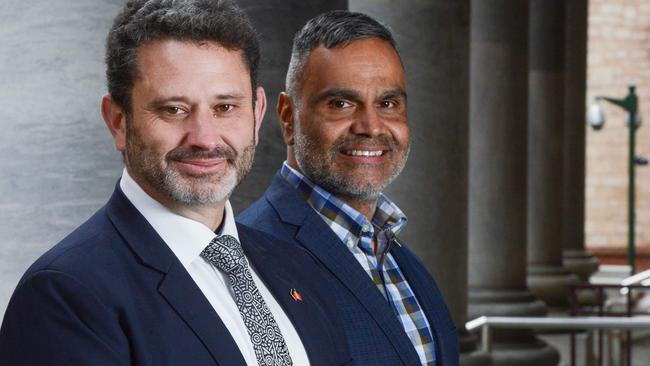
Kyam Maher admits the state government has to get its skates on.
“There is such a degree of a mood for change, positivity and optimism around Aboriginal Voice and representation that we really want to get moving,” he says on a Sunday morning in early July, having just overseen the appointment of Dale Agius as South Australia’s first Commissioner for First Nations Voice.
“I’m actually really excited … I’ve not seen this level of optimism … maybe even in my lifetime.”
Agius, who will start his new role in late July, declined to comment until he has officially begun work as commissioner.
Maher is aware that Voice and Treaty are not small projects and acknowledges a “full and final” Treaty process is unlikely to be completed in the current term of government.
He says he doesn’t feel a “pressure” to deliver but rather a sense of “expectation”.
“I feel it and we feel it as a government,” he says.
“These are big commitments; there is rightly expectation. I do feel that expectation broadly but particularly from the Aboriginal community that we’re going to make changes.”
What is clear is that the new state government needs a road map and to sell a clear and concise agenda about what it hopes to achieve, to silence the critics who will line up to criticise anything which hints at symbolism over outcomes.
But a few weeks after the budget estimates hearing the long list of questions continues to grow. Maher is still unable to say whether the government will negotiate agreements with individual Aboriginal nations, as it did with Buthera and the Narungga Nation.
It is unclear if there will be an overarching statewide Treaty, or details on what it would seek to achieve. There is also no clarity over how a state Voice would work or if it would be designed to coexist with a federal Voice.
Among the mounting questions, the two most pressing are: What does Labor hope to achieve? How does it plan to get there?
Maher says answers to those key questions will come when consultation on Voice starts in August. He is sure, though, that there must be outcomes that change Aboriginal lives for the better.
“What we learned from the early stage of Treaty negotiations … is a real desire for Treaty to lead to agreements that had enforceable ways that Aboriginal people had to be involved in the government policies that affected their lives,” he says. “Fundamentally it’s about ways to improve the lives of Aboriginal people through direct involvement in the policies that affect (their) lives.”
What is equally important is that Treaty is able to “change” and “mature” over time if needed. “It won’t be the same everywhere in the state,” Maher says.
The Attorney-General is the first to admit that there is still much to be done.
“It’s been commented that for 230 years it’s the laws of this state, and the British colony before that, that have dispossessed Aboriginal people, that have discriminated and caused so much damage, and that now it’s about time the laws worked for Aboriginal people,” he says.
Maher has made it clear his goal is to introduce a Treaty, and now a Voice.
To navigate the hurdles and bring the opposing groups together would be a lasting and significant legacy for the state’s first indigenous Attorney-General.
But, from this point on, the actions will need to match the words, lest it become a long road to nowhere.
THE PATH TO TREATY AND VOICE
What is the Uluru Statement from the Heart?
It is a historic coming together of indigenous people to call for constitutional recognition in
Australia’s history.
In May 2017 the statement was handed down in the shadows of Uluru with the signatures of more than 200 indigenous delegates.
The three pillars of the statement are Voice, Treaty and Truth.
It called for a constitutionally enshrined First Nations Voice to parliament and the establishment of a commission to oversee the processes of treaty-making and truth-telling.
What does Treaty mean?
Treaty is an agreement between government and the indigenous people of the land on which that government operates.
Treaty is designed for Indigneous groups to be recognised as the first owners of their land and to aid in measures being put in place for government and Indigneous groups to coexist. Dr Roger Thomas’s findings were that Treaty across South Australia would benefit Aboriginal nations as the Buthera Agreement, entered into in 2018 between the state government and the Narungga Nation Aboriginal Corporation, benefited the Narungga people of Yorke Peninsula.
Criticism of Treaty is that agreements and acknowledgment of Aboriginal people are merely tokenism and do not achieve tangible outcomes for Aboriginal nations as concrete policy might.
What does Voice mean?
Voice is the first aspect of the Uluru Statement from the Heart, which was handed down in 2017.
The statement called for an indigenous voice to be enshrined in the Australian Constitution. This would mean indigenous people would forever hold a place in the history of Australia. Likewise, a voice to parliament, at state and federal government levels, would ensure indigenous people were represented on legislation directly affecting them.




